As a responsible and caring dog parent, you probably want your best friend to live a long and healthy life – all the while staying as happy as a dog can possibly be.
Choosing a breed that’s prone to fewer acquired health issues and hereditary health conditions can save you a lot of vet bills and heartbreak in the long run – and it can also give you peace of mind while caring for your fur baby.
Although most people assume that the healthiest dog breeds are usually the ones that have the longest average lifespan – there are a myriad of other factors that impact a dog’s overall health, such as its genetic predisposition to certain health problems, and its tendency to stay active throughout its lifetime.
If your interest is piqued, and you want to know the 22 healthiest dog breeds, read on to find out.
The 22 Healthiest Dog Breeds Ranked
Before we get to the list of the healthiest dog breeds, it’s important to debunk the popular myth that mixed breeds are healthier than purebreds.
It was long believed that purebred dogs are more likely to be prone to inherited health issues because they tend to have less genetic diversity in their gene pool, and that mixed dog breeds are sturdier due to their greater genetic diversity.
However, a recent study of 27,254 dogs performed by the University of California, Davis, the Department of Animal Science, and the College of Agricultural and Environmental Sciences has concluded that purebred dogs were only more likely to be predisposed to 10 genetic disorders, which include elbow dysplasia, hypothyroidism, cataracts, and dilated cardiomyopathy, among others.
The study also revealed that there was no significant difference in 13 other hereditary ailments between purebred and mixed breeds, although mixed breeds are more prone to suffering from torn cranial ligaments than their purebred cousins.
So, since the majority of purebred dogs are as healthy as mixed breed dogs, for the purposes of this list, we’ll be focusing on the 22 healthiest purebred dog breeds.
The Healthiest Small Dog Breeds
For the majority of the animal kingdom, one rule seems to be prevalent – large species tend to live longer than small ones.
An elephant will always outlive its mortal enemy, the mouse, and a healthy cat will always live longer than a goldfish – but this general rule of thumb is not present in the canine kingdom.
It’s safe to say that small breeds generally have a longer average lifespan than medium-sized and large dog breeds.
Why do small dogs live longer than big dogs you ask? Well, it’s mainly due to the fact that large dogs age quicker and put more strain on their body compared to their small-breed counterparts.
That said, out of all the small dog breeds in the world, four individual breeds stand out as the healthiest dog breeds that also tend to live the longest.
1. The Chihuahua
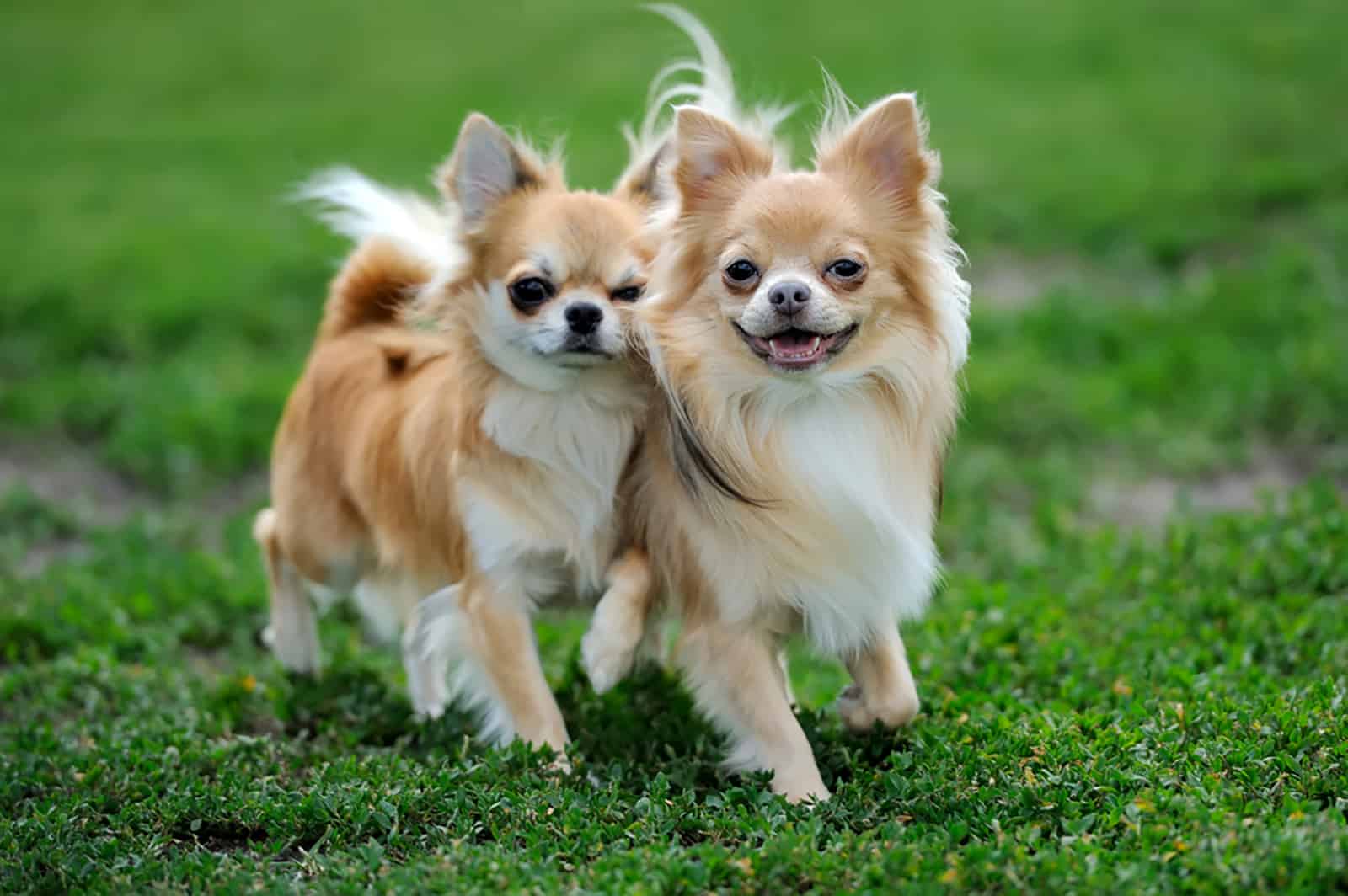
While the Chihuahua is technically the smallest dog breed in the world (with the Teacup Yorkie coming in at the second spot), it makes up for its tiny size with a huge personality – Chihuahuas are well-known for their big-dog energy despite weighing only two to six pounds, and standing at a mere six to nine inches, according to the Chihuahua growth chart.
Average Lifespan
Apart from being the smallest, Chihuahuas are regarded as one of the healthiest dog breeds in the world – the average life expectancy of a Chihuahua is between 12 and 18 years.
In fact, the oldest Chihuahua ever recorded lived to the ripe age of 21 years!
If we use the old formula for calculating a dog’s years compared to a human’s (now outdated since it was an approximation used back in the ’50s when the average lifespan of most dogs was 10 years, and the average human lifespan was 70), the oldest Chihuahua lived to 147 dog years.
Common Health Problems
Although Chihuahuas are a generally healthy dog breed, they’re not completely free of all health issues – they’re known to suffer from certain health conditions, both acquired and hereditary ones.
Some acquired health conditions that Chihuahuas are prone to are obesity and spinal injuries.
In contrast, the most common major hereditary health problems they face are heart problems, patellar luxation, hydrocephalus, and tracheal collapse – along with certain eye conditions that might develop in old age, such as glaucoma and cataracts.
That said, when properly taken care of and frequently taken to the vet for checkups, Chihuahuas are as healthy as they come, and most members of this breed will live a long and happy life.
See Also: 3 Signs Of When To Euthanize A Dog With Tracheal Collapse
Characteristics
Both male and female Chihuahuas are known to be highly affectionate toward their owner, and their lap-warming skills are second to none, albeit they are known to be aggressive sometimes – but this is most likely due to “small dog syndrome”, which makes small dogs act out mostly due to fear of being hurt.
However, when properly socialized and cared for, Chihuahuas make wonderful family pets, and even excellent therapy dogs for the elderly or disabled – they’re also moderate shedders, so maintaining their coat is easier than in other breeds that shed more.
If you want a Chihuahua puppy of your own, make sure to source your new pup from one of the best Chihuahua breeders in the U.S.
2. The Havanese
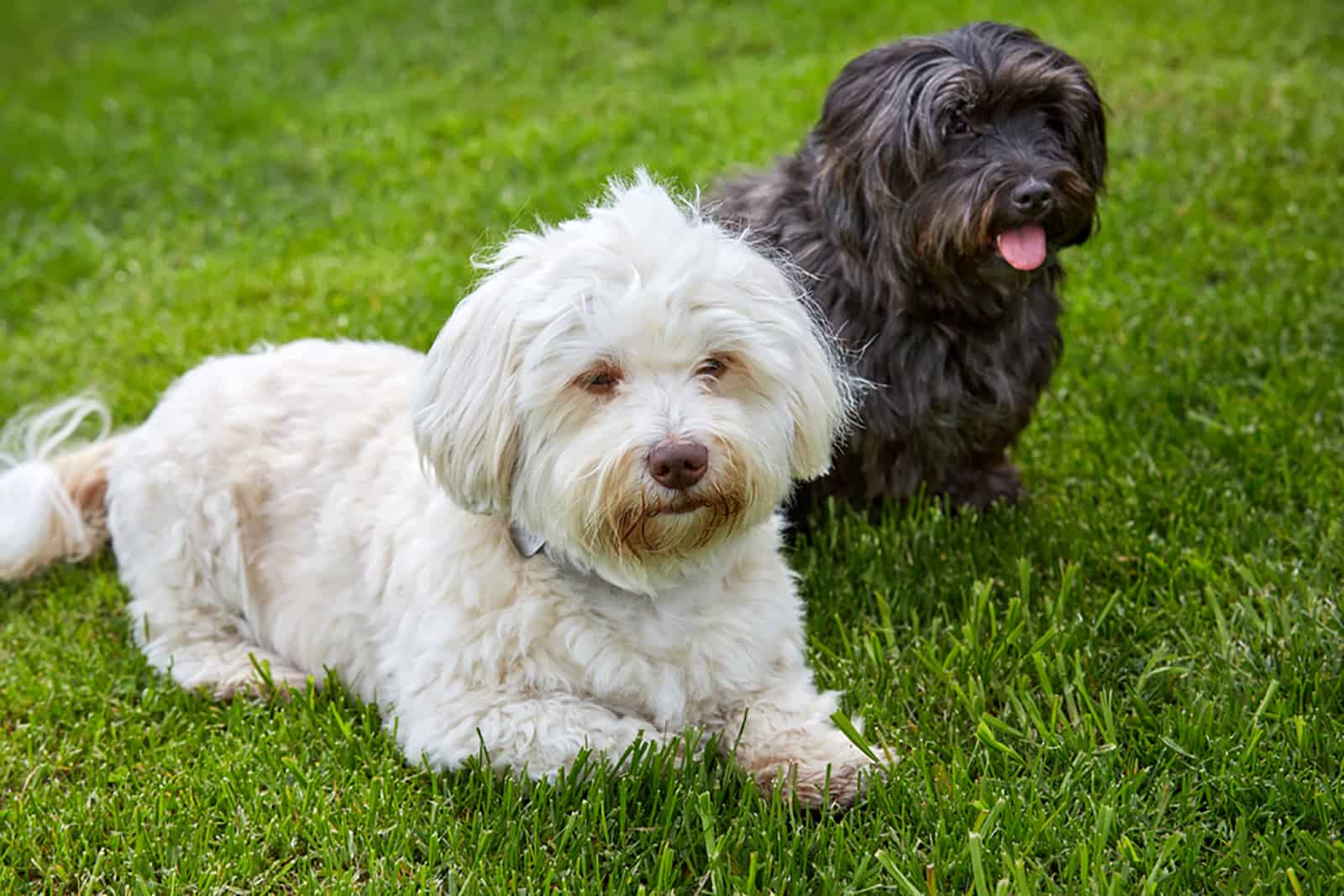
The Havanese is a small fluffy dog breed from the Bichon family, and it originated in the 1500s in Cuba – it was originally bred to be a companion dog, and it was favored among the Spanish aristocracy in the 1800s.
Today, Havanese are mostly kept as wonderful family pets, and are admired for their intelligence, playful personality, and gentle disposition toward their loved ones.
Average Lifespan
The average life expectancy of a Havanese dog is between 13 and 16 years, with the median being around 14.5 years – however, female Havanese dogs usually live around a year longer than their male counterparts.
With proper nutrition, regular vet visits, moderate amounts of daily exercise, and proper coat maintenance, among other factors that impact their lifespan, a Havanese dog can live up to 17 years of age – the oldest Havanese dog ever recorded lived to be 18 years and two months old.
Common Health Problems
Although they’re regarded as one of the healthiest dog breeds, Havanese dogs are not without their faults – like other small breeds, they are prone to certain health problems.
Some common major hereditary health problems that Havanese dogs face are Legg-Calve-Perthes Disease, chondrodysplasia, eye disorders, congenital deafness, and patellar luxation.
Some minor acquired health problems that Havanese dogs face are tooth and gum diseases and ear infections – although with proper dental care and general hygiene, these minor health problems can be easily prevented.
Characteristics
It’s interesting to note that Havanese dogs come in more than 25 different coat colors (including the rare and sought-after chocolate Havanese), and that their silky-smooth coat can be styled in many different ways depending on the owner’s preference.
Although they’re not among the most expensive dog breeds in the world, Havanese dogs are not inexpensive to purchase and maintain – the average purebred Havanese puppy in the U.S. costs between $1,000 and $2,500.
Temperament-wise, Havanese dogs are affectionate, playful, and outgoing, but they’re also not considered high-energy dogs that need lots of daily activity – after a moderate walk around the neighborhood, a Havanese dog will be content with snuggling up on the couch with its owner.
That said, Havanese dogs are known to be velcro dogs, which means they rarely want to leave their owner’s side – so proper socialization and training are key in order to teach a Havanese that it’s okay to stay alone at home for a while.
If you want to own a Havanese puppy, it’s best to buy one from one of the best Havanese breeders.
3. The Bichon Frise
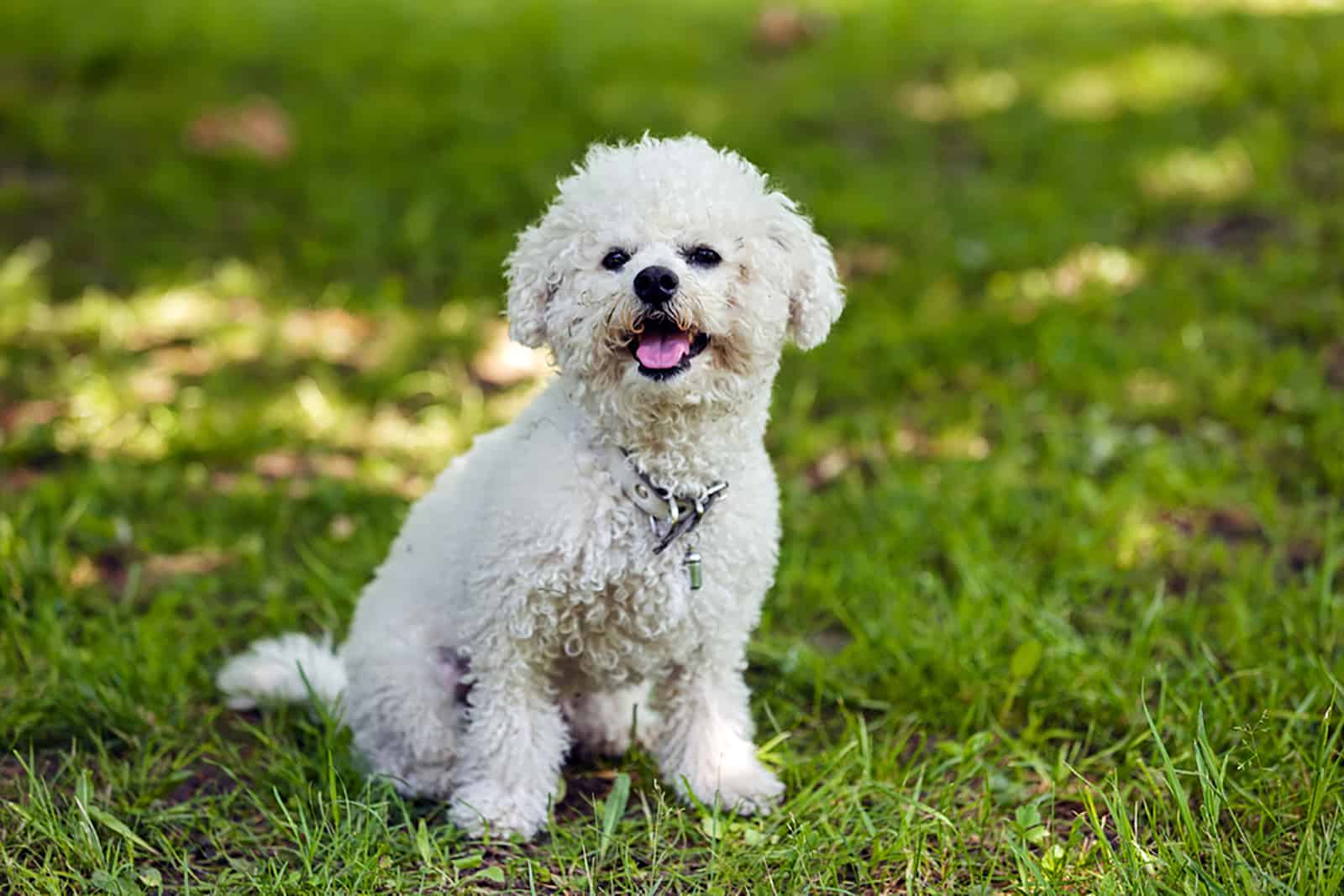
It’s believed that the Bichon Frise breed descends from Poodle-type water dogs, and that it originated in Tenerife, but was further developed by French sailors in the 14th century.
Bichon Frises were originally bred as companion dogs, and they eventually became favored by both Italian and French nobility during the 1500s – today, the Bichon Frise breed is still among the most popular companion dog breeds, and it is kept as a family pet all around the world.
Average Lifespan
As is the case with most small dog breeds, the average life expectancy of a purebred Bichon Frise dog is between 12 and 15 years – with proper care and nutrition, the average Bichon Frise can live up to 16 years of age.
The oldest known Bichon Frise dog that ever lived died at the age of 21, which is not surprising considering the fact that small dogs usually live longer than large and medium-sized dogs.
Common Health Problems
Both male and female Bichon Frises are generally considered healthy dogs, but they are known to be prone to some minor and major health problems.
The most common major health problems they face are allergies, Cushing’s disease, and patellar luxation, while less serious conditions they face are hip and elbow dysplasia, liver disease, and eye problems such as cataracts.
Characteristics
It’s interesting to note that Bichon Frises come in only one main coat color, albeit there are a few different varieties and shades of the same color.
Of course, Bichon Frise mixes come in all shapes and sizes, as well as a myriad of different coat colors and patterns that vary depending on which breed they’re mixed with.
Although they’re relatively cheap to purchase, Bichon Frise dogs are known to be a bit more expensive to maintain due to their curly coat that requires regular grooming, and their sensitive stomach that warrants a specialized diet.
Temperament-wise, Bichon Frise dogs are gentle, cheerful, and affectionate, but they’re also known to be feisty at times – proper training and early socialization are key to raising a well-rounded Bichon Frise that can get along with small children and other animals in the household.
In case you’re a person who’s more willing to opt to adopt – you can always adopt a Bichon Frise from one of the best Bichon Frise rescues in the U.S.
4. The Shetland Sheepdog
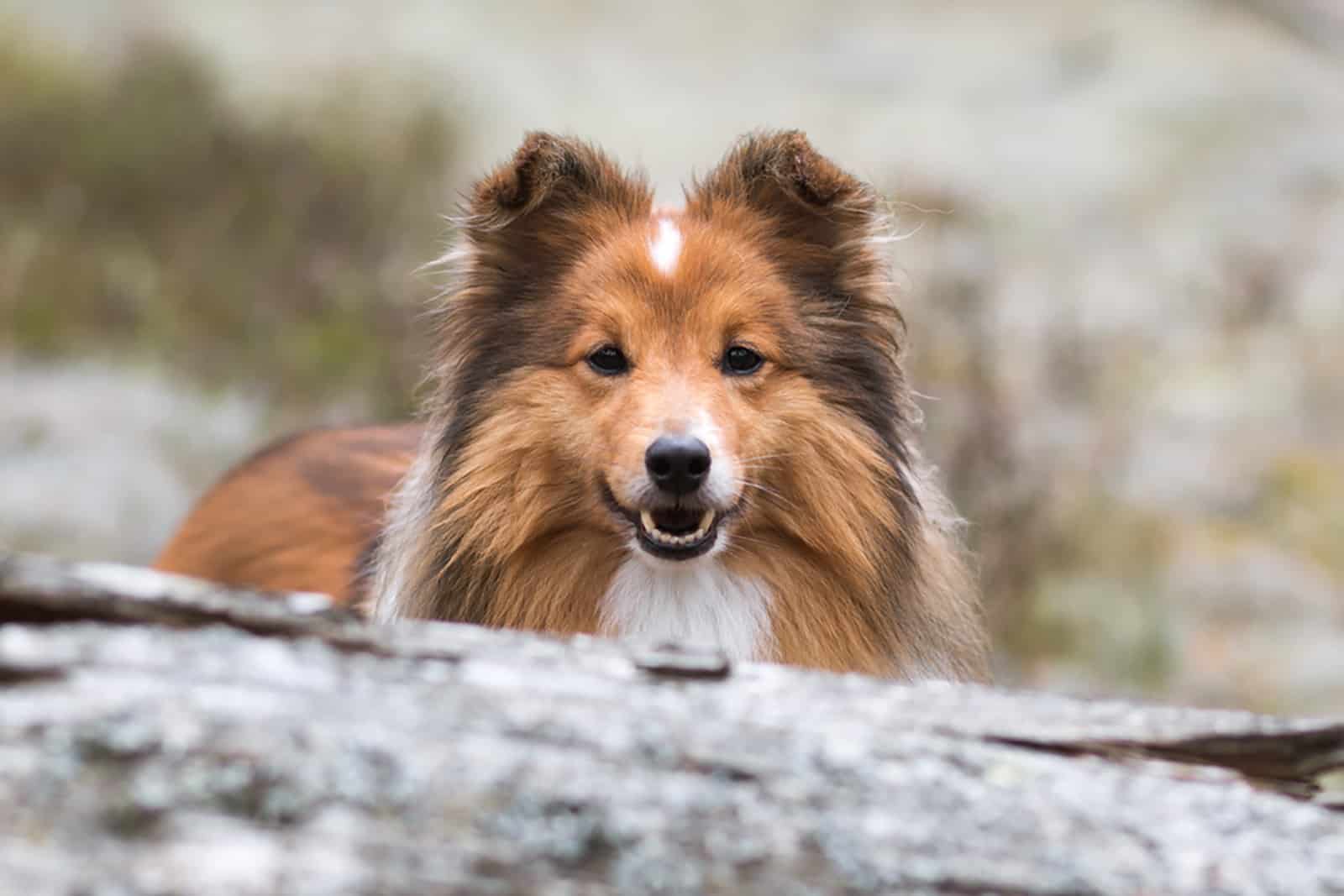
The last small dog breed on our list of the healthiest dog breeds is the Shetland Sheepdog – a herding dog breed that’s basically a smaller version of its large cousin, the Collie.
As a medium-energy dog breed, the Shetland Sheepdog is well-suited for people who prefer a more laid-back dog than a high-energy breed that requires more exercise and attention.
Although they were originally bred to be herding dogs, today, Shelties are used as service dogs, therapy dogs, and medical alert dogs – but they also excel at dog sports such as agility, obedience, rally, and of course, herding.
Average Lifespan
The Shetland Sheepdog has an average lifespan of 12 to 13 years, although if regularly exercised, given proper nutrition, and taken to the vet for checkups frequently, they can easily live up to 14+ years – in fact, the oldest Shetland Sheepdog ever recorded lived to be 20 years old.
Common Health Problems
Shelties are generally considered a healthy breed, although they are known to be predisposed to some hereditary health problems.
The most common major health concerns that Shetland Sheepdogs face are dermatomyositis and Legg-Calve-Perthes disease, while the less serious common health problems they face are progressive retinal atrophy, hypothyroidism, patellar luxation, hip and elbow dysplasia, and Collie eye anomaly.
Characteristics
Shelties are no doubt one of the most beautiful dog breeds. With their long, silky-smooth double coat that resembles healthy human hair, Shelties definitely turn a lot of heads wherever they go.
Temperament-wise, Shelties are intelligent, eager to please, gentle, and affectionate toward their loved ones – all of which are traits that make them very popular family pets.
However, they are very vocal dogs, and they do have a tendency to bark at nothing sometimes – but it’s better to have such an alert watchdog than to never know of potential impending danger, right?
Find this amazing dog in our list of best Shetland Sheepdog breeders.
The Healthiest Medium-Sized Dog Breeds
Now that we’ve covered the healthiest small dog breeds, it’s time to move on to the healthiest medium-sized breeds.
However, keep in mind that some of these breeds are technically classified as medium to large-sized breeds depending on how large an individual dog might grow to be – but for the purpose of this list, we’ll just say that they’re generally medium-sized.
5. The Bergamasco Shepherd
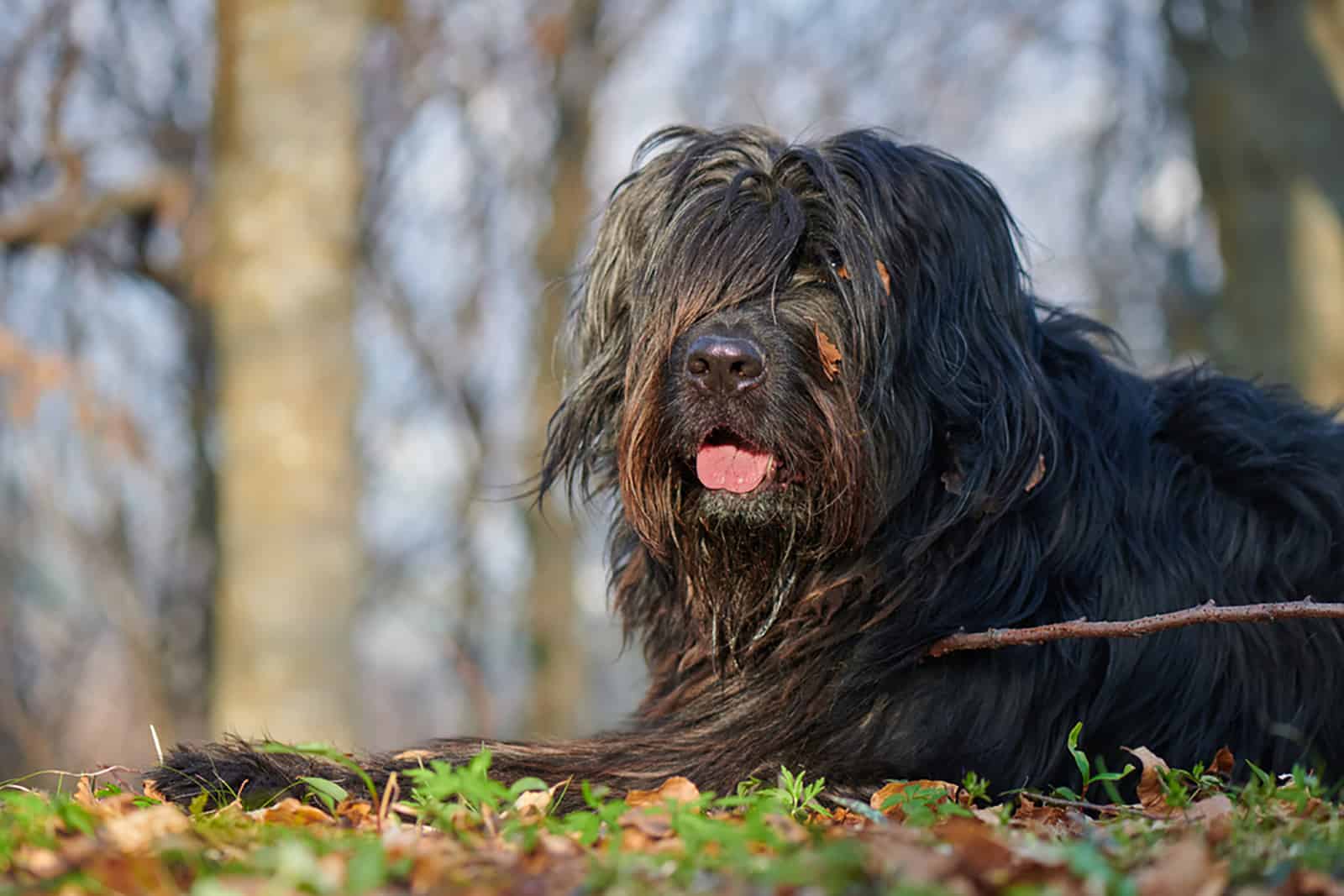
The Bergamasco Sheepdog (also called the Bergamese Shepherd) is a herding dog whose bloodlines can be traced back to ancient Persia, but some of the nomadic shepherds of the time eventually settled in the Italian Alps where the breed was subsequently popularized, and was given the name, Cane da Pastore Bergamasco.
Average Lifespan
This weird dog breed is one of the healthiest dog breeds in the world, in addition to being a rare breed that’s very sought-after.
Bergamasco Shepherds live between 13 and 15 years on average, which is credited to their mountain-dog ancestry – of course, taking proper care of a Bergie will significantly increase the chance of it living up to 15+ years.
Common Health Problems
Some health conditions that Bergamasco Shepherds are prone to are hip dysplasia, bloat, and eye problems – but other than these three main health concerns, this breed is generally considered one of the healthiest dog breeds.
It’s also worth noting that most shaggy dog breeds like the Bergamasco Shepherd are unfairly and mistakenly labeled as dogs that smell bad.
While it’s somewhat true that Bergamasco Shepherds sometimes smell bad, the most likely reason is that both male and female dogs urinate on their long, shaggy coat that soaks up all of the urine – if not dealt with on a regular basis by spot cleaning, it can cause more problems than just a funky smell.
However, if you notice that your dog smells like fish all of a sudden, you should know that a potential cause of the fishy odor might be an undiagnosed anal gland infection, which warrants a trip to the vet.
Characteristics
Bergamasco Shepherds are intelligent, vigilant, determined, and loyal dogs that are very easily trainable – which is why they make excellent watchdogs and wonderful family pets.
Although they’re affectionate and playful with their loved ones most of the time, they’re also known to be independent and aloof sometimes – which is why Bergamasco Shepherds need some solitude from time to time in order to recharge.
6. The Poodle

Ah, the Poodle – originally bred in Germany in the late 14th century as a waterfowl hunting dog, but later claimed by the French as the national dog of France, it’s one of the most popular dog breeds in the world, and for good reason.
The Poodle is also one of the most popular breeds for crossbreeding – the sheer number of designer dog breeds that have resulted from the Standard Poodle being mixed with other breeds is simply astounding.
Some of the most popular Doodles include the Cockapoo, the Cavapoo, the Maltipoo, the Yorkiepoo, the Goldendoodle, and the Labradoodle, and that’s just the tip of the iceberg when it comes to Poodle mixes.
Average Lifespan
The Standard Poodle is an extremely resilient breed that has an average life expectancy of 12 to 15 years, while some members of the breed, especially Poodle mixes, can live even longer than 15 years.
The oldest Poodle ever recorded was a pooch named Lady, who was born in 1908 and lived until 1937 – which effectively made the record holder for the oldest dog at the time, with an astounding 29 years of age.
Common Health Problems
Although generally a healthy breed, the most common health problems that Standard Poodles face are hip dysplasia, bloat, progressive retinal atrophy, thyroid problems, and Addison’s disease – even though statistics show that most Poodles die from heart disease and cancer.
Characteristics
Poodles are most famous for their curly, low-shedding, hypoallergenic coat that comes in more than 35 colors, including rare-colored dogs like the Blue Poodle, as well as rarely seen coat patterns like the Phantom Poodle.
Temperament-wise, Poodles are known for having comical personalities and being affectionate with their owner, although the Standard Poodle is typically calmer than the parti Poodle and toy Poodle varieties.
When properly socialized and trained, Poodles are lively, energetic, loyal, and gentle companions that make the best dogs for families with children.
Want a toy Poodle puppy of your own? Buy the perfect new pooch from one of the best Toy Poodle breeders in the U.S.
7. The Beagle

The Beagle is a British dog breed that was developed in the 16th century as a Rabbit-hunting dog, but today, Beagles are mostly kept as family companions.
In fact, Beagles are a very popular choice for families all over the world due to their fun-loving personality, gentle disposition, and low-maintenance requirements – but one downside is that they’re a bit stubborn sometimes and tend to bark a lot.
Average Lifespan
The average lifespan of a Beagle is between 12 and 15 years, although as we’ve mentioned before, with proper care, regular vet visits, and adequate nutrition, most Beagles can outlive their average life expectancy.
Butch, the oldest Beagle ever recorded, was born in 1975 and passed away in 2003 at the ripe age of 28.
Common Health Problems
Fortunately, Beagles are one of the healthiest dog breeds in the world – they’re only prone to a few minor health problems such as obesity, allergies, hypothyroidism, epilepsy, and cherry eye – all of which can easily be treated or prevented.
Characteristics
Temperament-wise, both male and female Beagles are known for their happy-go-lucky, friendly, and gentle dispositions – they’re a well-tempered and loyal breed that is able to fit well into any loving family.
Beagles wear their heart on their sleeve, and most members of this breed are as affectionate as any dog can be – some are even so fond of their owner that they follow them into the bathroom.
If you want a Beagle puppy of your own, make sure to source your new pup from one of the best Beagle breeders in the U.S., in addition to doing the research on how much Beagles cost to purchase and keep.
However, if you’re a fan of both the Poodle and the Beagle, but you can’t make up your mind as to which breed you want more, why not opt for the Poogle – the perfect hybrid of both adorable breeds.
8. The Basenji
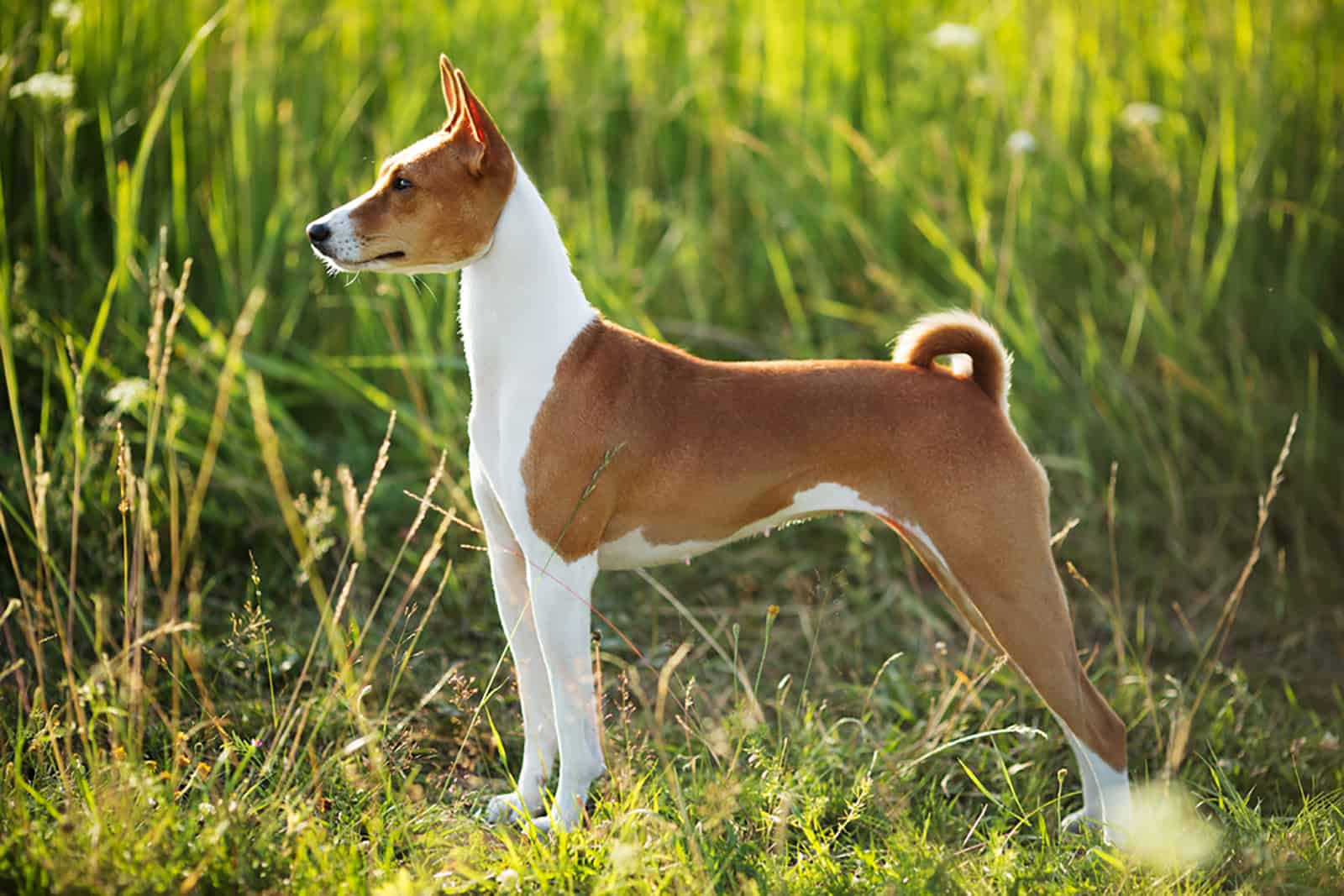
The Basenji is one of the oldest extant dog breeds in the world, and it is believed to have originated in ancient Africa – it’s also known as the Barkless dog since it can only vocalize a yodel-like sound due to its unusually shaped larynx.
Its ancestors were some of the first dogs to ever be domesticated, and the Basenji is still very genetically different from most modern dogs that were derived from extensive crossbreeding over the centuries – which is why scientists have mapped the genome of the Basenji in hopes of further understanding the domestication and subsequent evolution of modern dog breeds.
Average Lifespan
The Basenji has an average lifespan of 10 to 12 years, although with regular vet visits, proper nutrition, and adequate care, most Basenji dogs can live as long as 16 years.
The oldest Basenji ever recorded lived to be 17.5 years old.
Common Health Problems
As a generally healthy and resilient breed, there are not many health problems that are associated with Basenjis apart from a few minor health issues such as hip dysplasia, patellar luxation, and corneal dystrophy.
Of course, reputable Basenji breeders will always screen their breeding dogs for breed-specific hereditary ailments before they breed them – this lets the breeders know which dogs have low hip and elbow scores and should not be used in their breeding programs.
Characteristics
The Basenji was bred as a hunting dog, and its history was chocked full of hunting in packs – which is why even today, this breed loves to socialize with other dogs as well as humans, making it a good family dog when properly socialized from an early age.
Temperament-wise, Basenjis are affectionate and protective of their loved ones, but they can also sometimes be aloof or even mischievous due to their ingrained hunting instincts – in fact, Basenjis are among the few dog breeds that love being escape artists, and will often look for ways to jump the fence and go out and explore on their own.
One interesting thing to note is that even though they’re a highly active breed, Basenjis need very little maintenance grooming-wise – this breed is known for its cat-like behavior of self-grooming and cleaning.
However, just because cats are better than most dogs at maintaining their personal hygiene doesn’t mean that they’re better at other things. Still not convinced? Check out our article on the 13 undeniable reasons why dogs are better than cats – and then get back to us.
9. The Shiba Inu
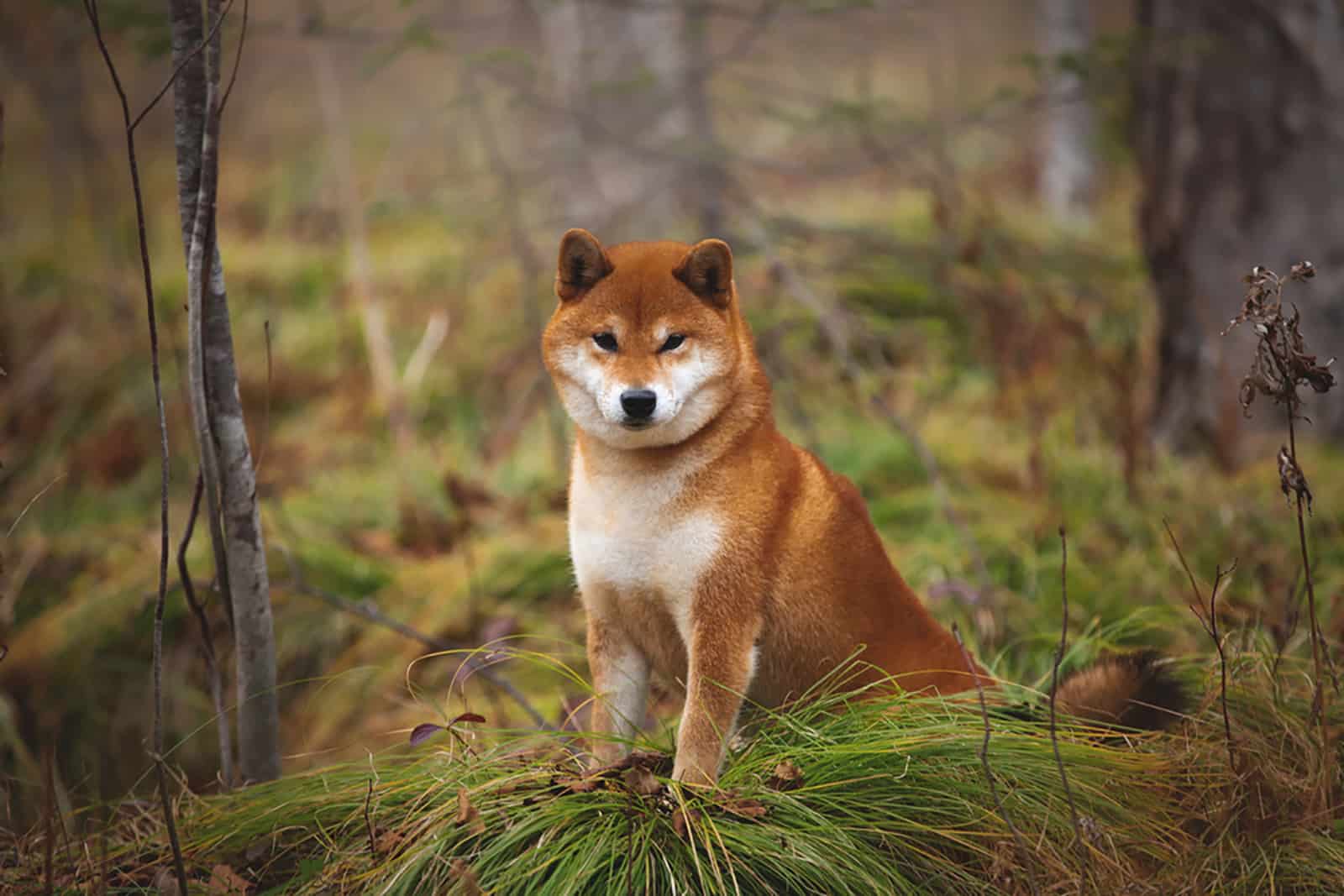
The Shiba Inu is the smallest of all the six native Japanese Spitz breeds, which include the Akita Inu, the Kishu Ken, the Shikoku Ken, the Hokkaido Ken, and the Kai Ken.
Shiba Inu dogs are known for their goofy personality, adorable face, and protective nature – which are only a few of the traits that make this breed such a popular choice for families worldwide.
Shibas are also often mistaken for the Korean Jindo because these two breeds are very similar to the untrained eye.
Average Lifespan
The average lifespan of a Shiba Inu is 12 to 15 years, but with proper nutrition, regular vet visits, and lots of love and care – Shiba Inus can live even longer than the average 15 years.
According to the Guinness Book Of World Records – Pusuke, the oldest Shiba Inu dog ever recorded, died just 3 months shy of his 27th birthday.
Common Health Problems
One of the healthiest dog breeds in the world, the Shiba Inu is prone to only a few minor genetic health issues, which include eye problems, congenital allergies, patellar luxation, and joint dysplasia.
Of course, responsible and ethical Shiba Inu breeders will always perform DNA tests on their breeding dogs prior to using them in their breeding program in order to produce healthy litters of Shiba Inu puppies that are free of all major genetic health problems.
Characteristics
Shiba Inus are medium-sized dogs that grow to be between 16 and 24 pounds, and stand between 14 and 16 inches at the withers.
They have a dense double coat that comes in a variety of different colors and patterns – however, the Japanese NIPPO standard only acknowledges Shibas with Urajiro patterns.
Temperament-wise, both male and female Shiba Inus are loyal, alert, charming, and friendly toward their family – but they are known to be stubborn sometimes and even aggressive toward strangers.
Grooming-wise, Shiba Inus shed quite a lot year-round, and shed even more during their blow seasons – their coat is not hypoallergenic, which might be a downside for prospective Shiba Inu owners with dog hair allergies.
If you want a Shiba Inu dog of your own, why not consider rescuing a dog from one of the best Shiba Inu rescues for adoption in the U.S.?
10. The German Pinscher

Although its exact origin is a mystery, the German Pinscher is believed to have originated in Germany sometime between the 17th and 19th centuries.
It was bred to serve as a vermin-hunting dog that was used to eradicate rats and other small rodents on farms – today, German Pinschers are mainly kept as family dogs.
Average Lifespan and Common Health Problems
The average lifespan of a German Pinscher is 12 to 14 years.
Generally considered one of the healthiest dog breeds, German Pinschers are sturdy and resilient dogs that are prone to only a few minor health issues, which include eye problems, joint dysplasia, and Von Willebrand’s disease.
Characteristics
The German Pinscher is a very energetic breed that needs a lot of exercise, and is best suited to owners who live an active lifestyle – this is generally attributed to the breed’s working-dog heritage.
They thrive best when they have a job to do, or when they’re taken for long hikes in nature in order to expend their high energy levels.
Temperament-wise, German Pinschers are intelligent, loyal, and friendly dogs that love spending time with their owner, but they also need a firm hand and an owner who is able to establish dominance in order to curb their inherently energetic nature.
11. The Whippet
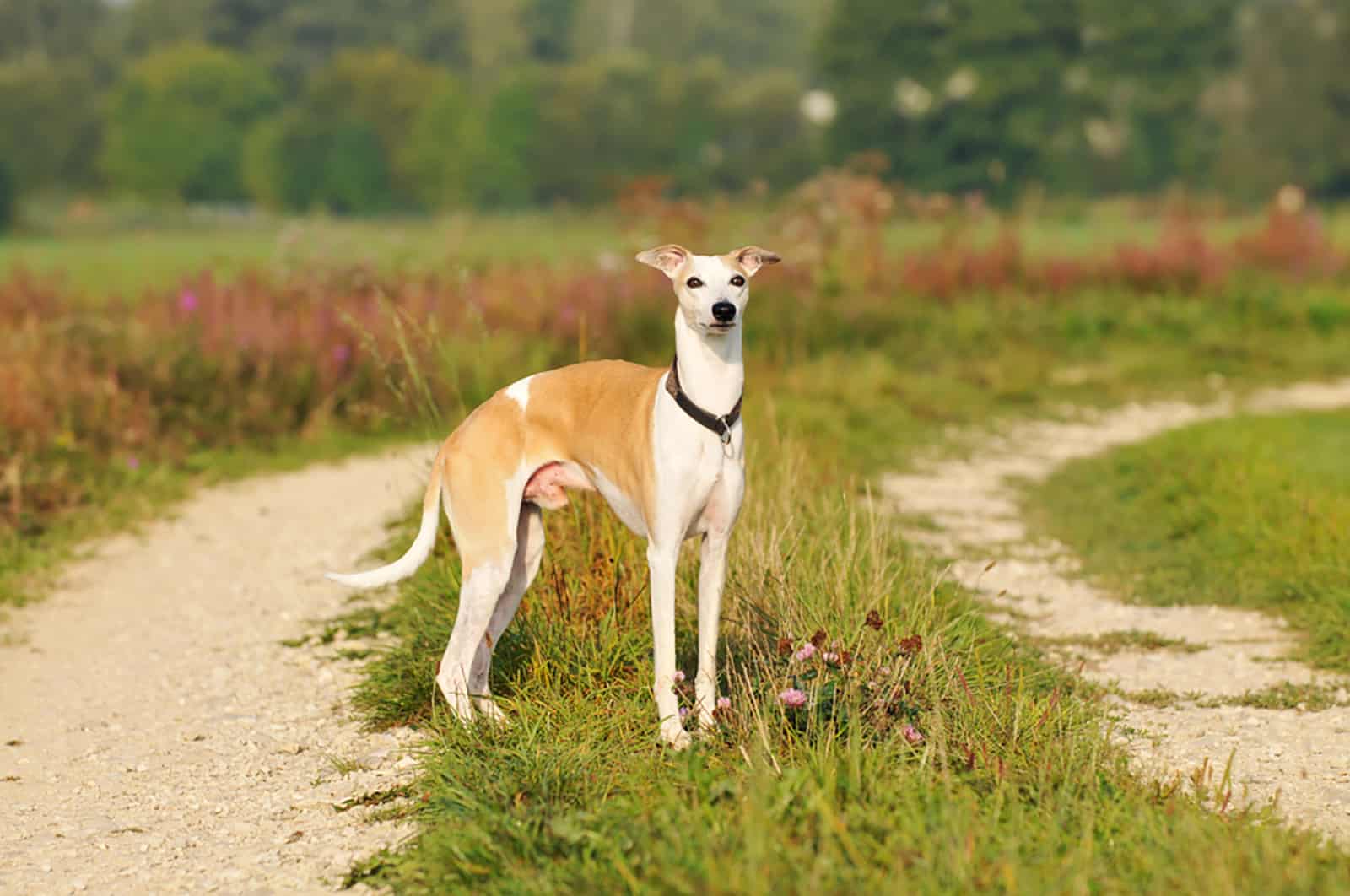
Our next healthiest dog breed is the Whippet – a hound-type breed that was bred in 19th century England as a rabbit-hunting dog.
It’s believed that the Whippet was originally developed from English Greyhounds and other Terrier breeds, and was subsequently crossbred with Italian Greyhounds resulting in the Whippet we know today.
The Whippet is among the spotted dog breeds that will turn a lot of heads wherever they go due to their unique coat patterns and generally elegant appearance.
Average Lifespan
The life expectancy of a Whippet hound is between 12 and 15 years on average – a generally healthy breed, most Whippets can outlive their median lifespan with proper care, regular vet visits, and adequate dog food that is full of the right nutrients.
Common Health Problems
The Whippet hound is one of the healthiest dog breeds for a reason – this breed is only prone to a few minor genetic health problems and a few major ones.
Some major health issues Whippets face are progressive retinal atrophy, immune-mediated problems, and mitral valve disease, while some minor health concerns are eye problems, such as dry eye and pink eye.
Characteristics
Generally very playful, affectionate, and gentle with their owner, Whippets are able to fit well into any family – their protective nature also makes them excellent watchdogs and guard dogs, which is a plus for anyone considering buying a Whippet for themselves.
One important thing to note is that due to their short coat and low body fat percentage, Whippets don’t do well in cold climates – if you’re taking your Whippet out for a stroll during the winter, make sure that it’s at least wearing a warm doggy sweater.
If you want a new Whippet puppy of your own, but don’t know where to find one, check out some of the best Whippet breeders in the U.S.
12. The Siberian Husky
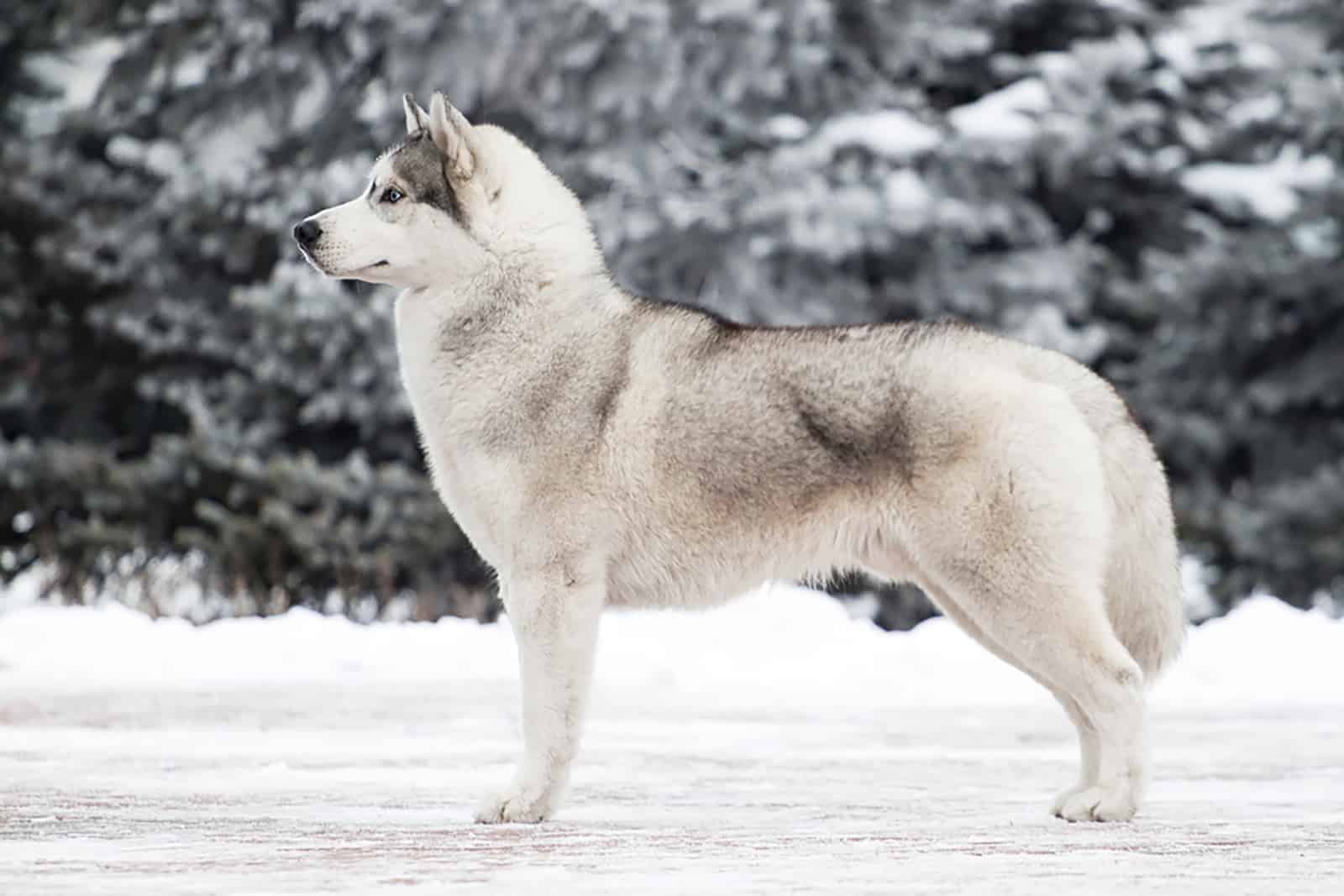
The Siberian Husky is undoubtedly one of the most recognizable dog breeds in the world, in addition to being one of the healthiest dog breeds.
The breed originated in Siberia, and was originally used as a sled-pulling dog by the Chukchi people of eastern Siberia.
Siberian Huskies are also famously known for their characteristic wolf-like howling, and although they often howl during nighttime, Huskies are also avid barkers during the daytime.
Average Lifespan and Common Health Problems
Siberian Huskies have an average lifespan of 11 to 13 years, although most members of the breed can live longer than 14 years when properly taken care of.
One of the most resilient and healthiest dog breeds, Siberian Huskies are prone to only a few minor health issues, such as hypothyroidism – and eye problems, such as cataracts, corneal dystrophy, and progressive retinal atrophy.
Characteristics
Siberian Huskies come in various coat colors and coat patterns, including the gorgeous, rarely-seen brown Siberian Husky.
Temperament-wise, both male and female Siberian Huskies are intelligent, loyal, affectionate, outgoing, and friendly dogs that mesh well with other dogs in the household, which makes them an ideal choice for families who already have pet dogs.
Although they’re not hypoallergenic, Siberian Huskies are medium-shedding dogs that only shed heavily twice per year when they blow their coat.
If you want a Siberian Husky of your own, make sure to purchase your new puppy from one of the best Siberian Husky breeders in the U.S.
13. The Border Collie
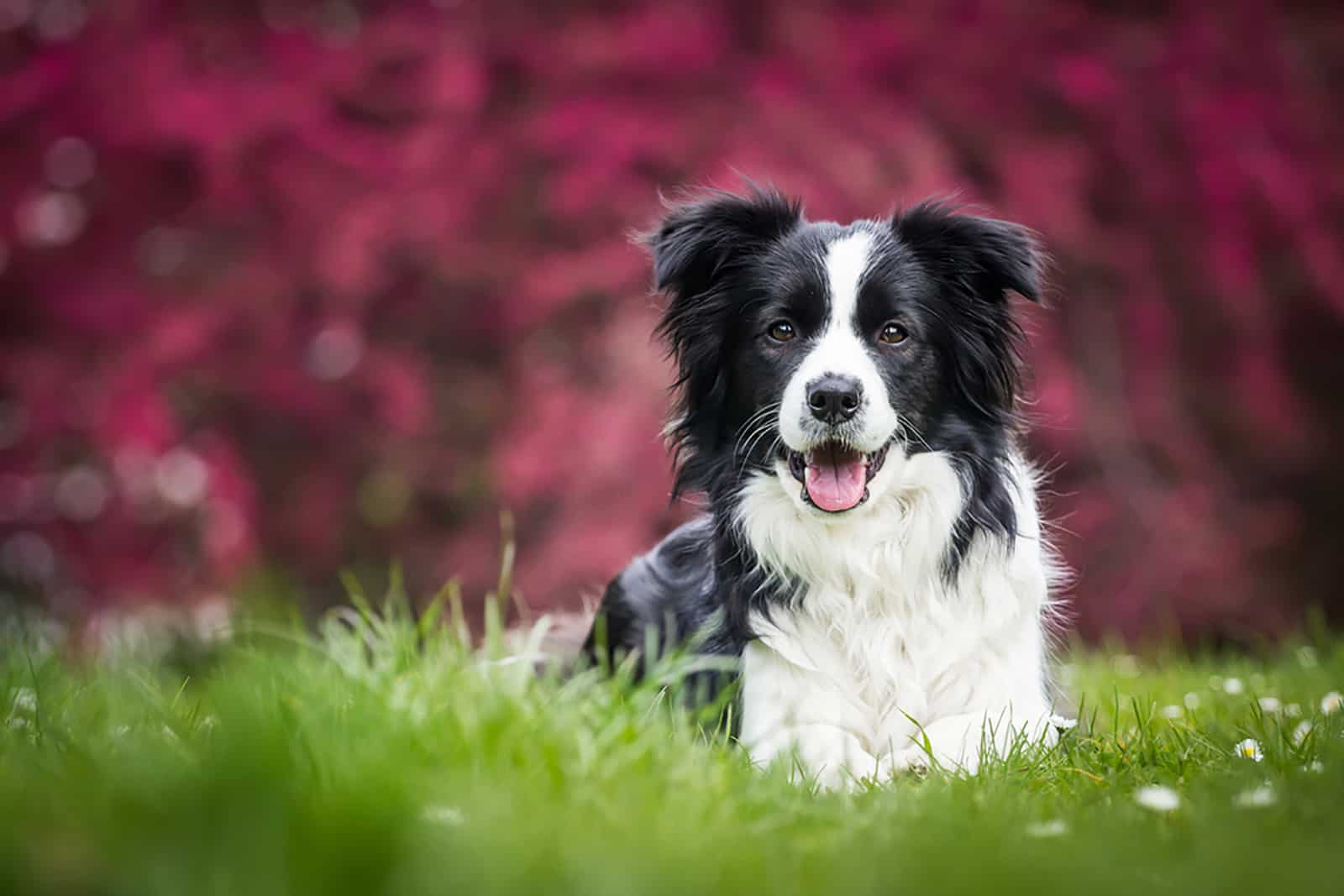
The Border Collie is a herding dog breed that originated sometime in the late 1800s in the highlands of the Anglo-Scottish border region – hence, the name Border Collie.
This dog breed ranks number one on the list of the 20 smartest breeds in the world, according to a study published by Dr. Stanley Coren, a professor of psychology at the University of British Columbia.
Average Lifespan and Common Health Problems
Apart from being the most intelligent breed, the Border Collie is also one of the healthiest dog breeds in the world – what more could this breed have going for it?
The average lifespan of a Border Collie is between 10 and 17 years, and when properly cared for, most members of this breed can live even longer than their average lifespan.
Bramble, the oldest Border Collie ever recorded, lived to be just over 25 years old.
Characteristics
Border Collies come in more than 25 different coat colors and patterns, including the rare blue merle Border Collie.
They are known to be moderate-shedders, although their coat is not hypoallergenic – which is one of the few downsides of this incredible breed.
Temperament-wise, both male and female Border Collies are friendly, outgoing, and affectionate, but they’re also very protective of their loved ones, and might be aggressive toward strangers from time to time.
Border Collies are highly energetic dogs that love to spend most of their time outdoors – they’re also known for their love of swimming, which is always a great way to keep a dog healthy and fit.
One potential downside is that Border Collies love to bark, but there are certain measures that owners can take in order to curb their enthusiasm.
14. The Australian Shepherd
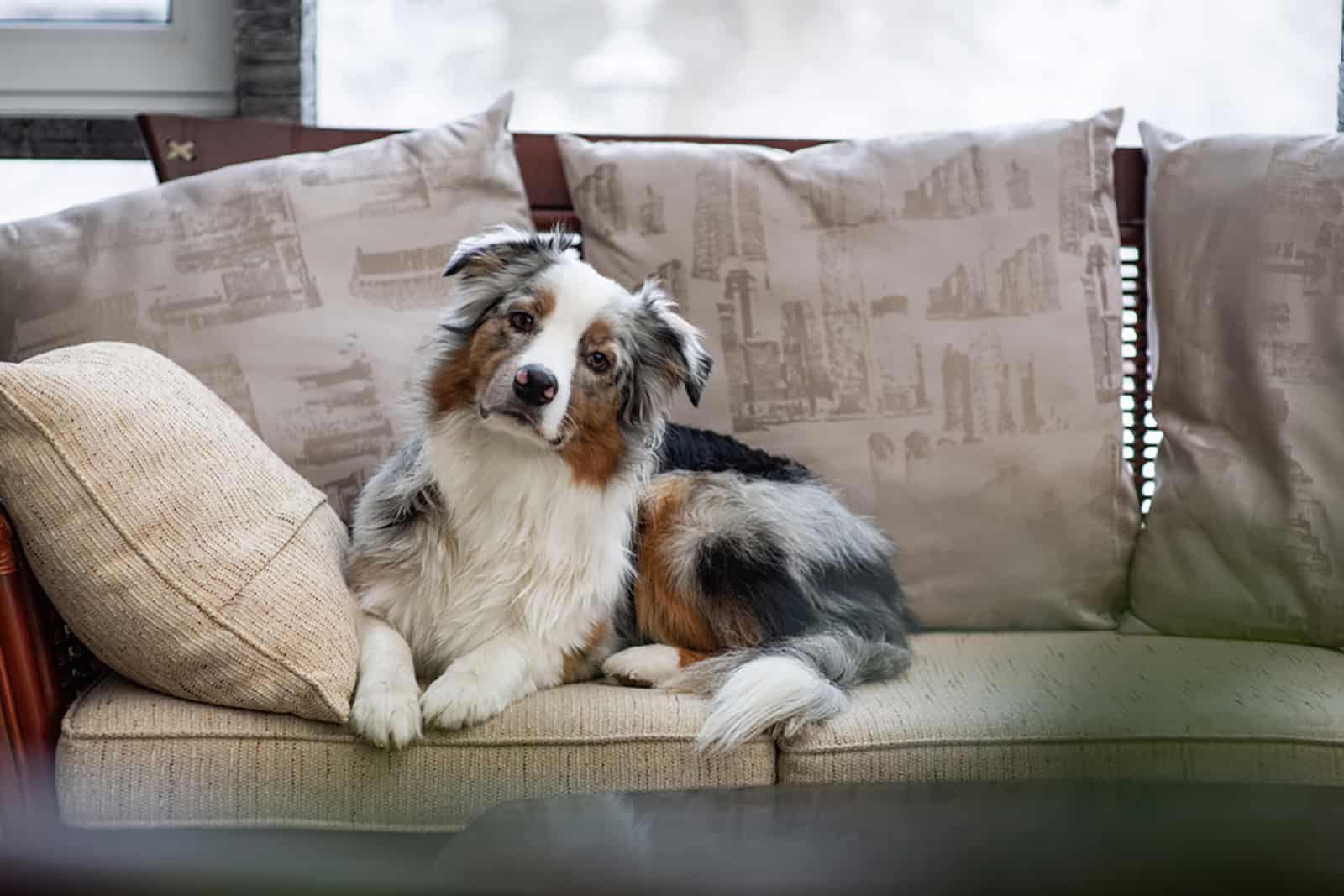
Although the breed bears the name ‘Australian Shepherd’, it was technically developed in the Western United States in the 19th century.
Originally bred to serve as herding dogs – today, due to their versatility and intelligence, Australian Shepherds are used as search and rescue dogs, seeing-eye dogs, therapy dogs, drug-sniffing dogs, and regular old family companions.
Average Lifespan and Common Health Problems
One of the healthiest dog breeds, Australian Shepherds have an average lifespan of 13 to 15 years, and they are prone to only a few minor health problems such as hip dysplasia, epilepsy, and nasal dermatitis – all of which can be kept at bay with proper care, moderate exercise, adequate nutrition, and regular checkups.
Characteristics
Australian Shepherds come in various different coat colors and patterns, some of which are the rare red merle and blue merle Australian Shepherds.
Temperament-wise, both male and female Australian Shepherds are affectionate, friendly, outgoing, and protective of their loved ones – all of which are traits that make them good family dogs.
If you want to buy a new Australian Shepherd puppy, be sure to check out some of the best Australian Shepherd breeders in the U.S.
15. The Australian Cattle Dog
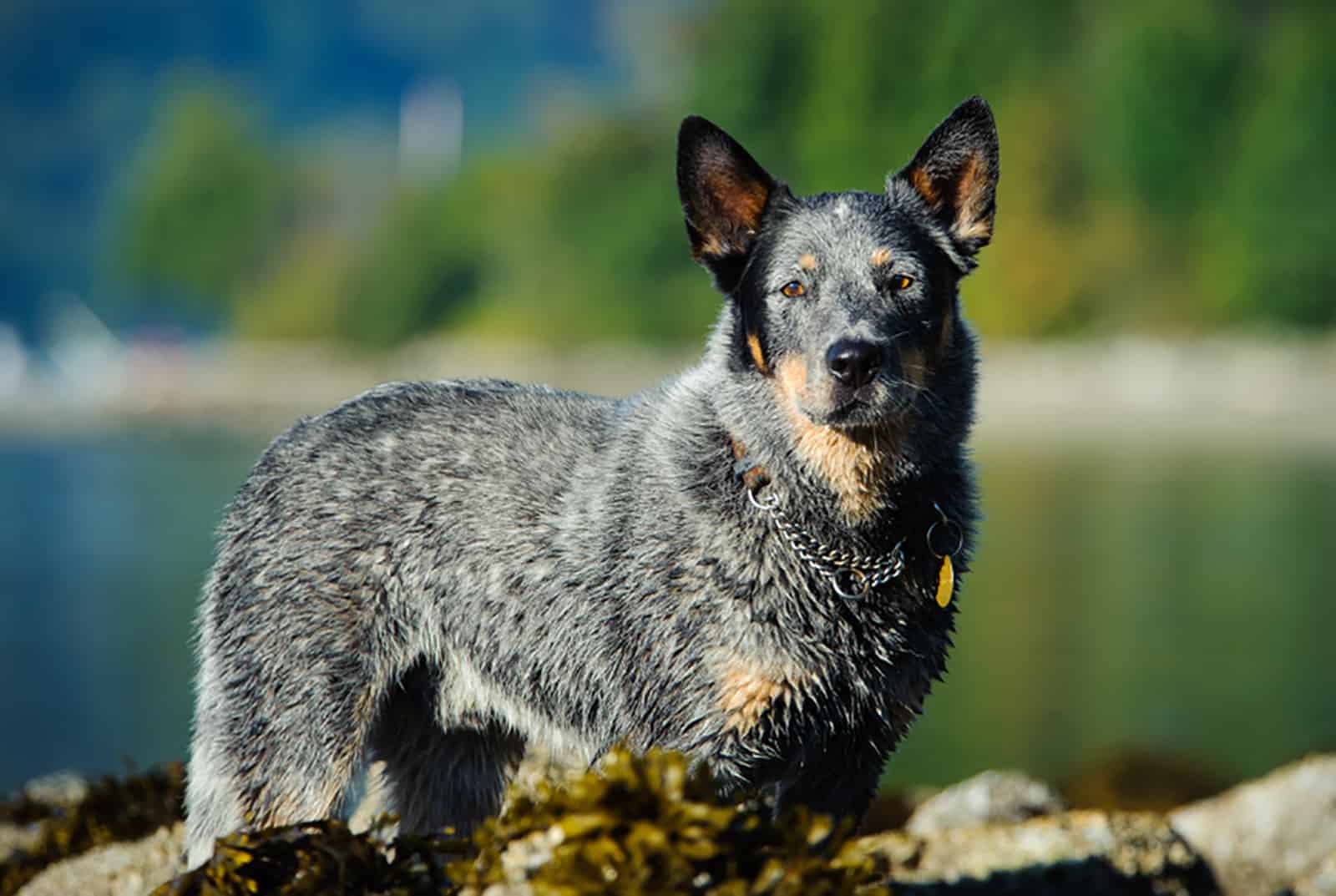
The Australian Cattle Dog (also called the Blue Heeler) is a herding dog breed that was developed in the 19th century in Australia by crossbreeding the native Dingoes with Collies and other herding dogs that were brought to Australia by British settlers.
Apart from being a unique breed, the Blue Heeler is also one of the healthiest dog breeds in the world.
Average Lifespan and Common Health Problems
Similar to the Australian Shepherd, the Australian Cattle Dog has an average lifespan of 13 to 15 years.
Bluey, the current Guinness Book Of World Records holder for the title of oldest dog in the world, lived to be 29.5 years old.
Technically, the world’s oldest dog was a Kelpie named Maggie, who lived to be 30 years old –but unfortunately, her owners didn’t have the paperwork necessary to prove her age, so the title of the world’s oldest dog is still held by Bluey, the Blue Heeler.
Australian Cattle dogs are regarded among the healthiest dog breeds, and they are prone to only a few minor health conditions such as eye defects, congenital deafness, and joint problems.
Characteristics
A highly energetic breed, the Blue Heeler thrives best when it has a job to do, or when it’s given ample amounts of daily exercise – they are best suited for individuals with active lifestyles – they are not content with simply lounging around all day.
Temperament-wise, Blue Heelers are intelligent, obedient, friendly, and brave dogs that are able to get along well with children and other pets in the household – provided that they’re properly socialized from a young age since they are known to be strong-willed and independent.
If you want a Blue Heeler puppy of your own, make sure to source your new pup from one of the best Blue Heeler breeders in the U.S. – however, if you’re on the fence between the Australian Shepherd and the Blue Heeler, you might want to opt for the hybrid of these two breeds.
You might also want to keep a Blue Heeler growth chart handy in order to easily keep track of your new puppy’s developmental progress.
16. The German Shepherd
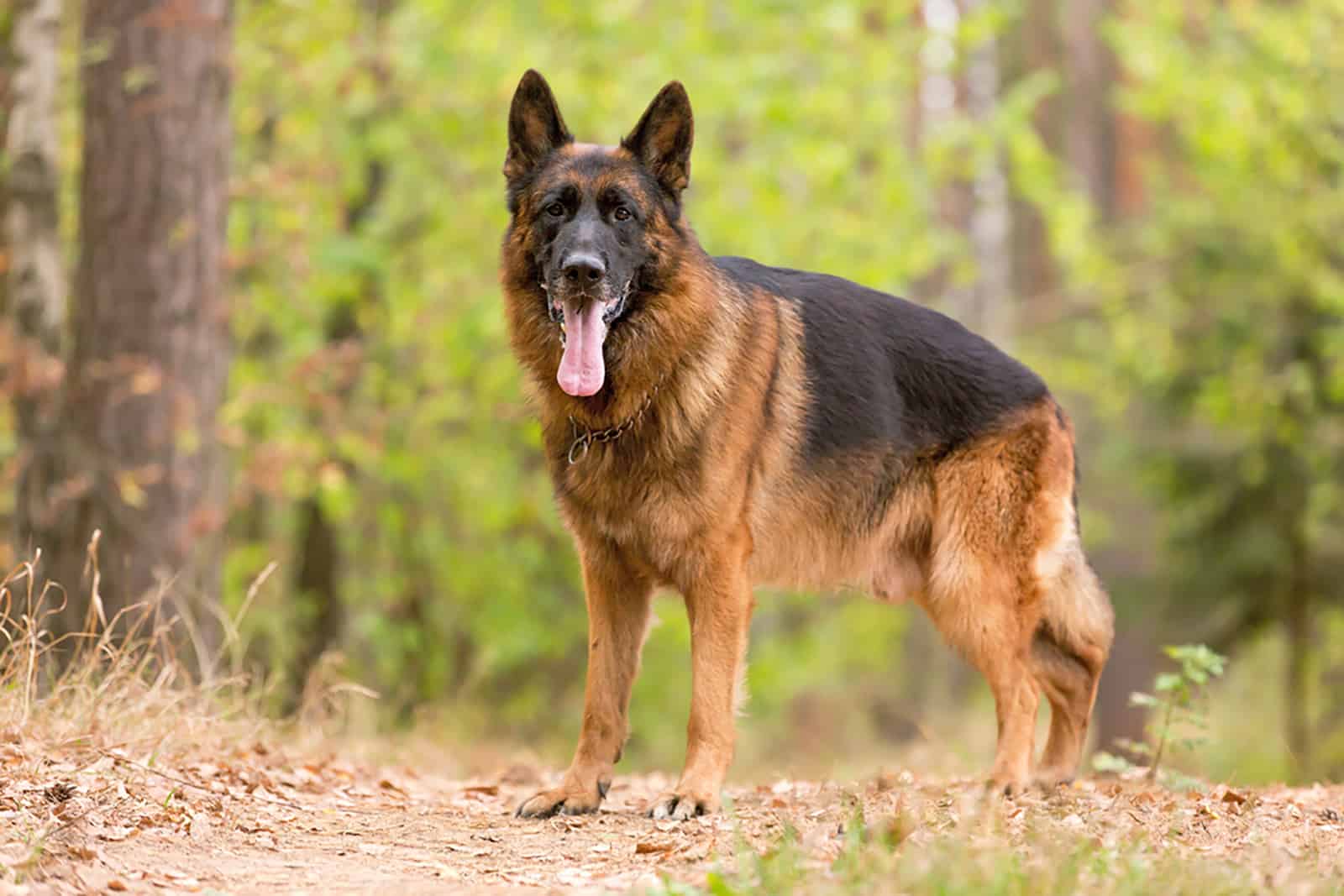
The German Shepherd is one of the most recognizable breeds out there, and is practically synonymous with the word “dog”.
Apart from being the first image that pops into mind when you hear the word “dog”, the German Shepherd is also one of the healthiest dog breeds in the world.
Originally bred as herding dogs – today, German Shepherds are valued for their incredible versatility, and are utilized for many purposes such as search and rescue, bomb detection, drug-sniffing, therapy work, and so much more.
Average Lifespan and Common Health Problems
The average lifespan of a German Shepherd is nine to 13 years – with proper care, adequate nutrition, and regular checkups, most GSDs can live even longer than 13 years.
The most common health problems that German Shepherds are prone to are minor ones, such as diabetes and eye problems, and major ones, such as epilepsy, bloat, hemophilia, and joint problems.
Characteristics
Due to their incredible versatility and resilience, German Shepherds are one of the most popular breeds for crossbreeding with other dogs – there are more than 23 German Shepherd mixes currently in existence.
They also come in a variety of different colors, some of which are rare coat colors such as the stunningly beautiful silver German Shepherd, the gorgeous liver German Shepherd, and the borderline-mythical white German Shepherd.
Temperament-wise, both male and female German Shepherds are loyal, obedient, alert, affectionate, and protective dogs – all of which are traits that make them one of the most popular dogs in the world.
If you want to buy a GSD puppy of your own, check out some of the best German Shepherd breeders in the U.S.
17. The Labrador Retriever
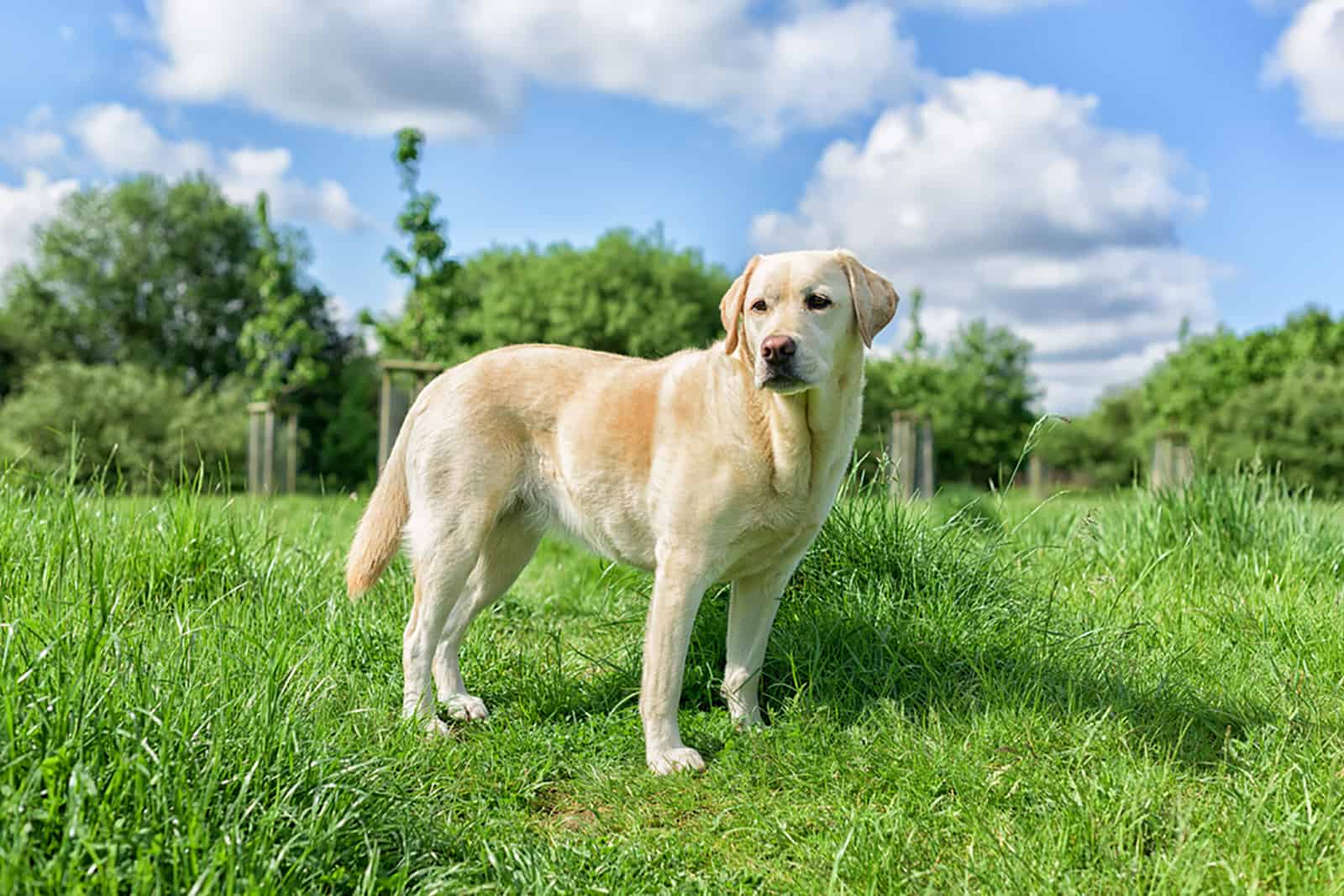
The Labrador Retriever is a breed that needs no introduction – it’s the number one most popular breed in the world according to the statistics published every year by the American Kennel Club.
As its name suggests, the Labrador Retriever originated in Newfoundland and Labrador, and was originally bred to serve as a waterfowl hunting and retrieving dog.
Average Lifespan and Common Health Problems
The average lifespan of a Labrador Retriever is 10 to 12 years – of course, when given adequate dog food, taken for regular checkups, and given lots of love, most Labs can outlive their average lifespan.
The most common major health problems that Labrador Retrievers are prone to are arthritis, hypothyroidism, epilepsy, joint problems, and cancer.
Some minor health problems they face are obesity and ear infections, both of which can be prevented with regular hygiene.
Characteristics
Labrador Retrievers come in three main coat colors, three rare colors, and more than six different coat color variations and markings.
Temperament-wise, both male and female Labrador Retrievers are even-tempered, gentle, affectionate, playful, and obedient – although female Labs are known to be more protective of their owners than male Labs.
One potential downside is that Labs shed a lot, especially twice per year when they blow their coat – this might be a minus for people who are allergic to dog hair.
Other than that, Labrador Retrievers are one of the most personable breeds out there, in addition to being one of the healthiest dog breeds.
If you decide to buy a Labrador Retriever puppy, you’ll definitely need a comfortable dog bed for your new pooch – be sure to check out the best dog beds for Labrador Retrievers, before your new pup arrives.
The Healthiest Large Dog Breeds
Now that we’ve covered the healthiest dog breeds that are medium-sized, it’s time to move on to the healthiest large dog breeds and wrap up this list.
18. The Belgian Malinois
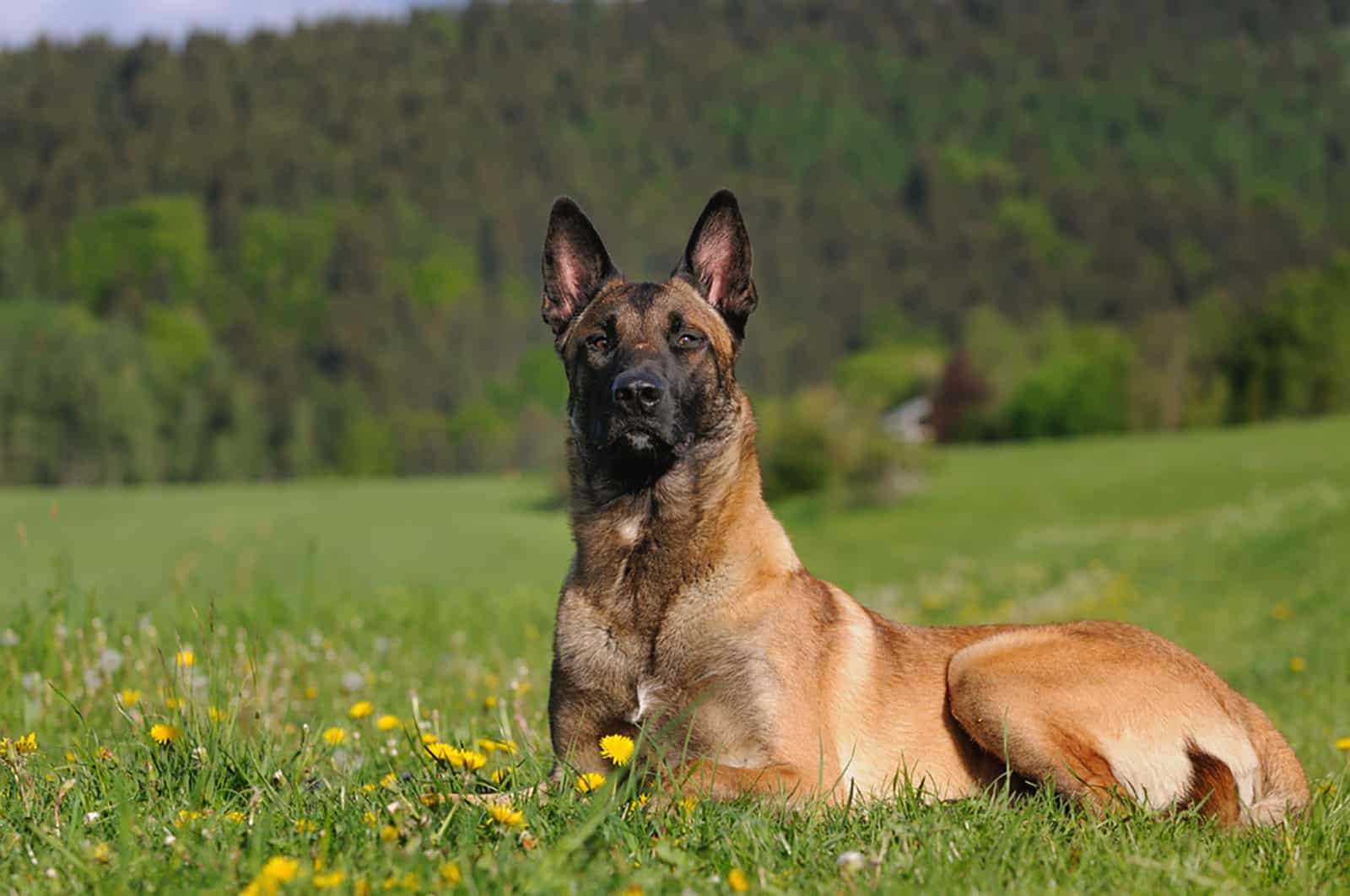
The Belgian Malinois, as its name suggests, is a dog breed that originated in Malines, Belgium, sometime in the 1800s.
It was developed to serve as a sturdy herding dog and personal protector with a strong work ethic – but today, most Belgian Malinois are kept as family pets.
Average Lifespan and Common Health Problems
The average lifespan of a Belgian Malinois is 10 to 14 years, which is surprisingly long for such a large dog breed – of course, the lifespan of an individual dog depends on the quality of its diet and its feeding schedule, as well as how often it’s taken to the vet for checkups.
The most common health problems that Belgian Malinois dogs face are eye problems such as cataracts, progressive retinal atrophy, and pannus, as well as other health problems such as joint dysplasia and cancer.
Characteristics
Although most Belgian Malinois are short-coated, there is a long-coated version of the breed – both types come in three main coat color varieties.
Temperament-wise, both male and female Belgian Malinois are confident, alert, and protective dogs that also have a soft spot for their loved ones – most members of the breed are affectionate and gentle with their family, and get along well with other pets in the household if properly trained and socialized.
Check out our article on the best Belgian Malinois breeders in the U.S. if you want to buy a Mal puppy for yourself.
19. The English Foxhound
The English Foxhound is one of the four extant Foxhound breeds, and it’s one of the rarest among them – it was bred in the 16th century in England, and was originally meant to serve as a fox-hunting dog.
Average Lifespan and Common Health Problems
With an average lifespan of 10 to 13 years, English Foxhounds are one of the longest-living large dog breeds that are prone to only a few minor health conditions.
The two most common health conditions that English Foxhounds face are renal disease and hip and elbow dysplasia – other than these two health problems, this breed is one of the healthiest dog breeds in the world.
Characteristics
English Foxhounds are friendly, tolerant, gentle, and affectionate toward their owner, but are also known to be aloof and even alert around strangers – which is why they make excellent watchdogs and guard dogs.
Although they might get along well with small children if properly socialized and trained, this breed often prefers the company of other dogs rather than children – which is why they should always be supervised around kids.
20. The German Shorthaired Pointer
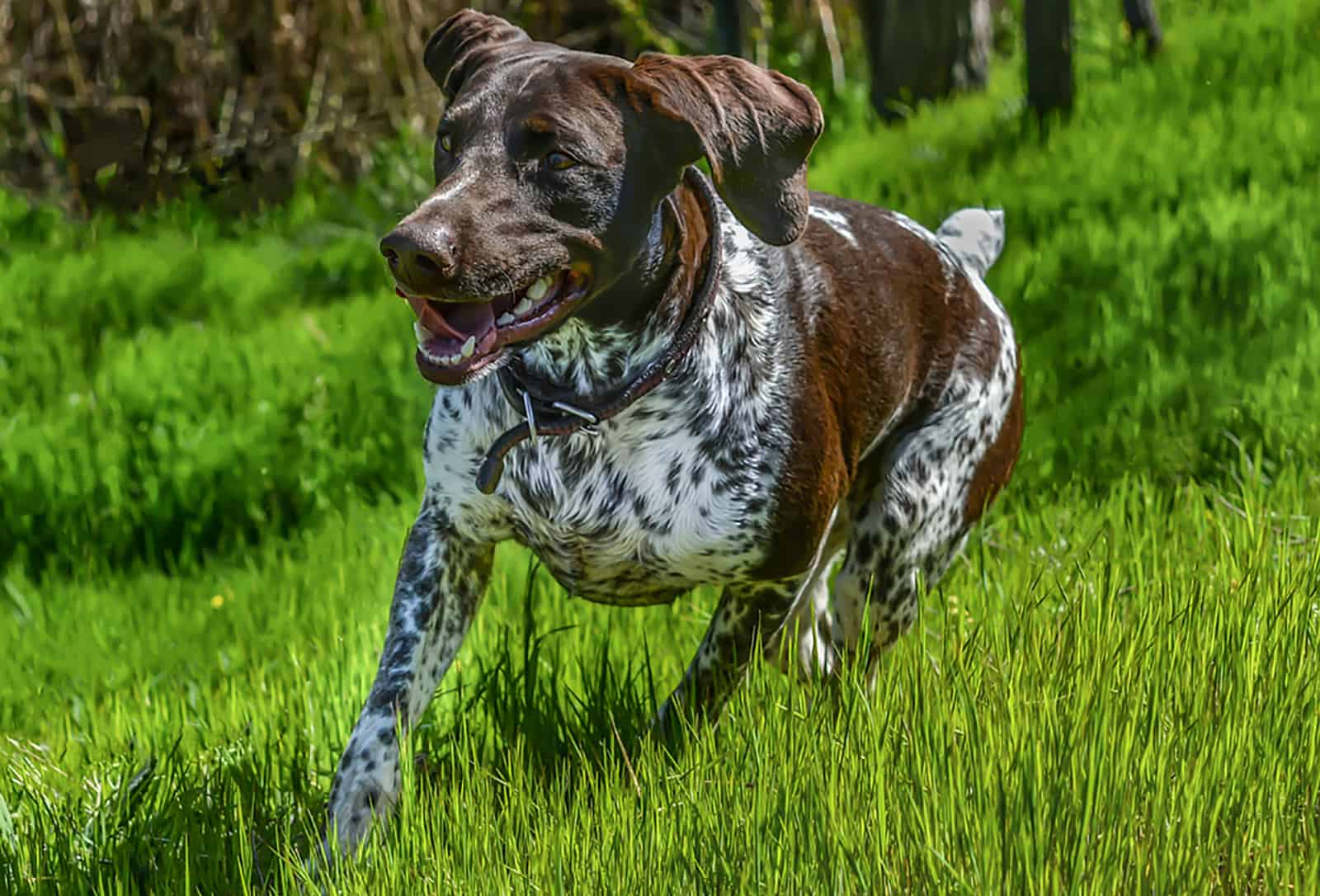
The German Shorthaired Pointer (or GSP, for short) is a dog breed that originated in Germany in the 17th century where it was mainly used as an all-purpose gun dog and versatile hunting companion.
Today, GSPs are still used as gun dogs, but the majority of them are kept as wonderful family pets due to their gentle disposition and friendly personality.
Average Lifespan and Common Health Problems
The average life expectancy of GSPs is 12 to 14 years, which is a couple of years longer than most large dog breeds like the Cane Corso.
The most common major health concerns for GSPs are lymphedemas, while some minor ones are hypothyroidism, joint problems, pannus, and Von Willebrand’s disease.
Characteristics
GSPs come in six main coat colors and various coat patterns, with one of the most common variations being the roan German Shorthaired Pointer.
These large dogs can grow up to 70 pounds in weight, and up to 25 inches in height, which is why keeping a German Shorthaired Pointer growth chart handy is useful for any GSP owner who wants to keep track of their puppy’s growth progress.
Temperament-wise, both male and female German Shorthaired Pointers are intelligent, boisterous, obedient, and loyal dogs that make excellent family pets.
If you want a GSP puppy of your own, make sure to purchase your new pooch from one of the best German Shorthaired Pointer breeders in the U.S.
21. The Greyhound

The Greyhound is one of the oldest extant dog breeds in the world – its origins can be traced back to as far as 3000 BC in ancient Egypt.
Dubbed by some as the Ferraris of the canine world, Greyhounds are the fastest dog breed in the world, in addition to being one of the healthiest dog breeds.
They were originally used as hunting dogs, but due to their incredible agility and ability to reach speeds of 40 to 45 mph – they’ve also made a name for themselves as racing dogs.
Average Lifespan and Common Health Problems
The average lifespan of a Greyhound is 10 to 14 years – considering that they’re a large and highly energetic breed that puts a lot of strain on their body, it’s remarkable how long these dogs can live.
Some of the most common health problems that Greyhounds face are dental problems, musculoskeletal injuries, eye problems, and digestive problems – along with being sensitive to cold climates like the Whippet.
Characteristics
Although they’re called Greyhounds, these dogs come in more than six color variations – as far as shedding goes, this shorthaired breed is a moderate shedder, and sheds slightly less compared to its cousin, the Whippet.
Temperament-wise, Greyhounds are affectionate, intelligent, gentle, and loyal to their owner – but are also independent and strong-willed, so they require lots of proper training and early socialization in order to get along well with other dogs and small children.
If you want to buy a Greyhound for yourself, make sure to buy a puppy from one of the best Greyhound breeders in the U.S.
22. The Alaskan Malamute
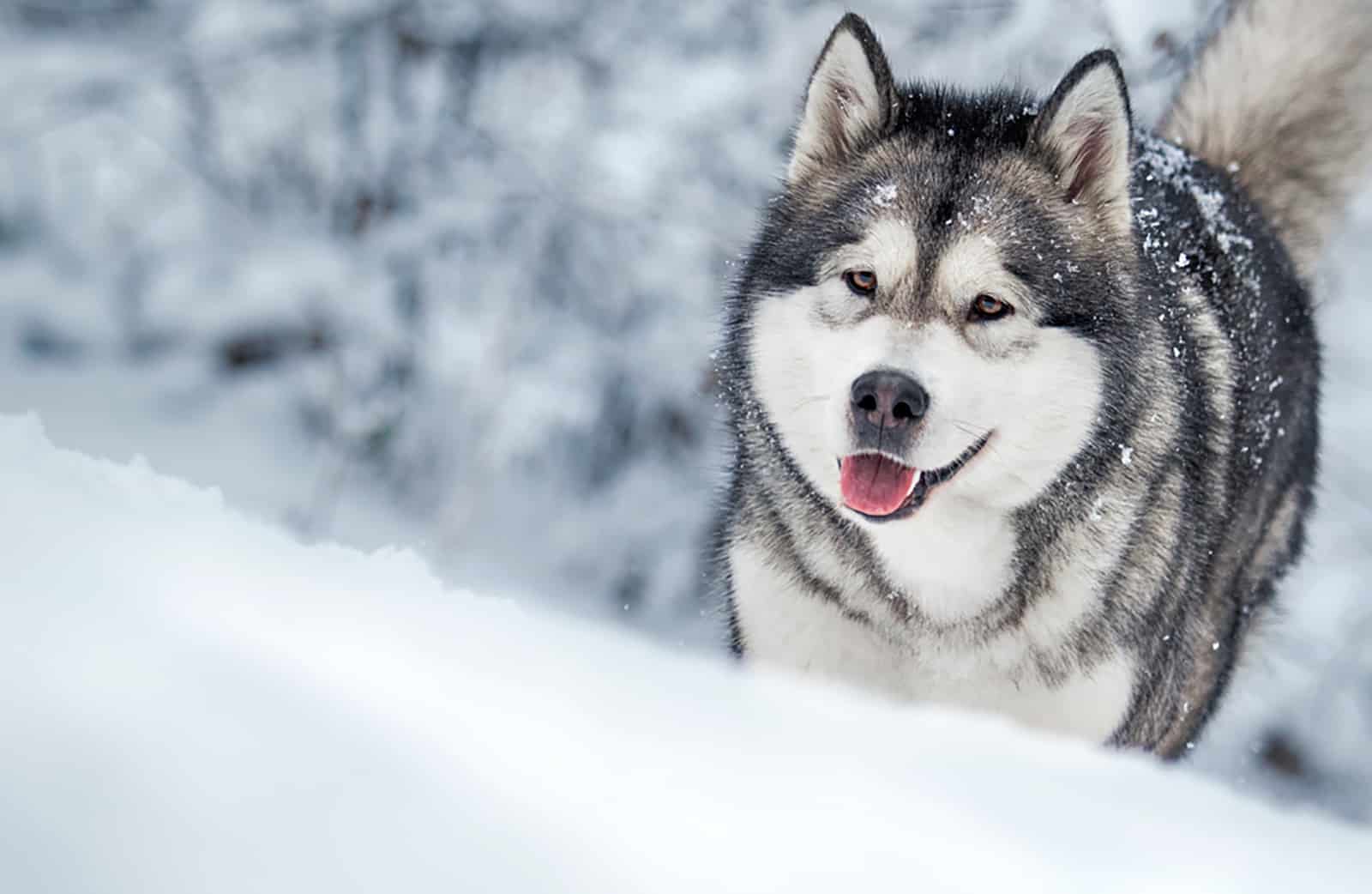
The last healthiest dog breed on our list is the Alaskan Malamute – a hound that originated in Alaska, and was bred for endurance and strength in order to be able to do its job, which was mainly pulling heavy sleds along the Alaskan wilderness.
Although they bear a strong resemblance to wolves, Alaskan Malamutes are no more related to wolves than other dog breeds.
In fact, DNA research has shown that Shih Tzus are genetically closer to wolves than Alaskan Malamutes are – surprising, isn’t it?
Average Lifespan and Common Health Problems
These giant furry dogs have an average lifespan of 10 to 12 years, which is a normal age range for such large dog breeds – with proper care, nutrition, and regular vet visits, most Alaskan Malamutes can live even longer than 12 years.
The most common health problems these dogs face are bloat, chondrodysplasia, hip dysplasia, cataracts, hypothyroidism, and polyneuropathy.
Characteristics
Alaskan Malamutes are generally friendly, affectionate, devoted, and loyal dogs that love to be around their owner – they are also extremely territorial and protective of their loved ones, which makes them excellent guard dogs.
Make sure to check out the best Alaskan Malamute breeders in the U.S. if you want to own your own gentle giant.
What Makes A Dog Healthy?
Now that you know what the healthiest dog breeds are, you might be wondering what actually makes a dog healthy.
The truth is, any dog that is well-bred, well-fed, well-exercised, and well-socialized has the chance to live a long and healthy life.
Even dogs that are prone to certain genetic health conditions can live a long and healthy life if taken care of properly.
Of course, even dogs that are healthy from the get-go might develop certain health issues down the line – which is why it’s important to frequently take your dog to the vet for checkups.
In Conclusion
Now that we’ve covered what the healthiest dog breeds in the world are – if you’re searching for the perfect new puppy, you’re bound to have an easier time finding the right breed for you.
That said, keep in mind that even though choosing a breed that’s prone to fewer health issues might save you some heartbreak and vet bills down the line – it also might not.
Every dog is an individual, and should be taken care of as such – if you’re certain that you’re ready to commit to a new puppy, make sure to choose a reputable and responsible breeder, and take your dog to the vet often.
Related articles:
